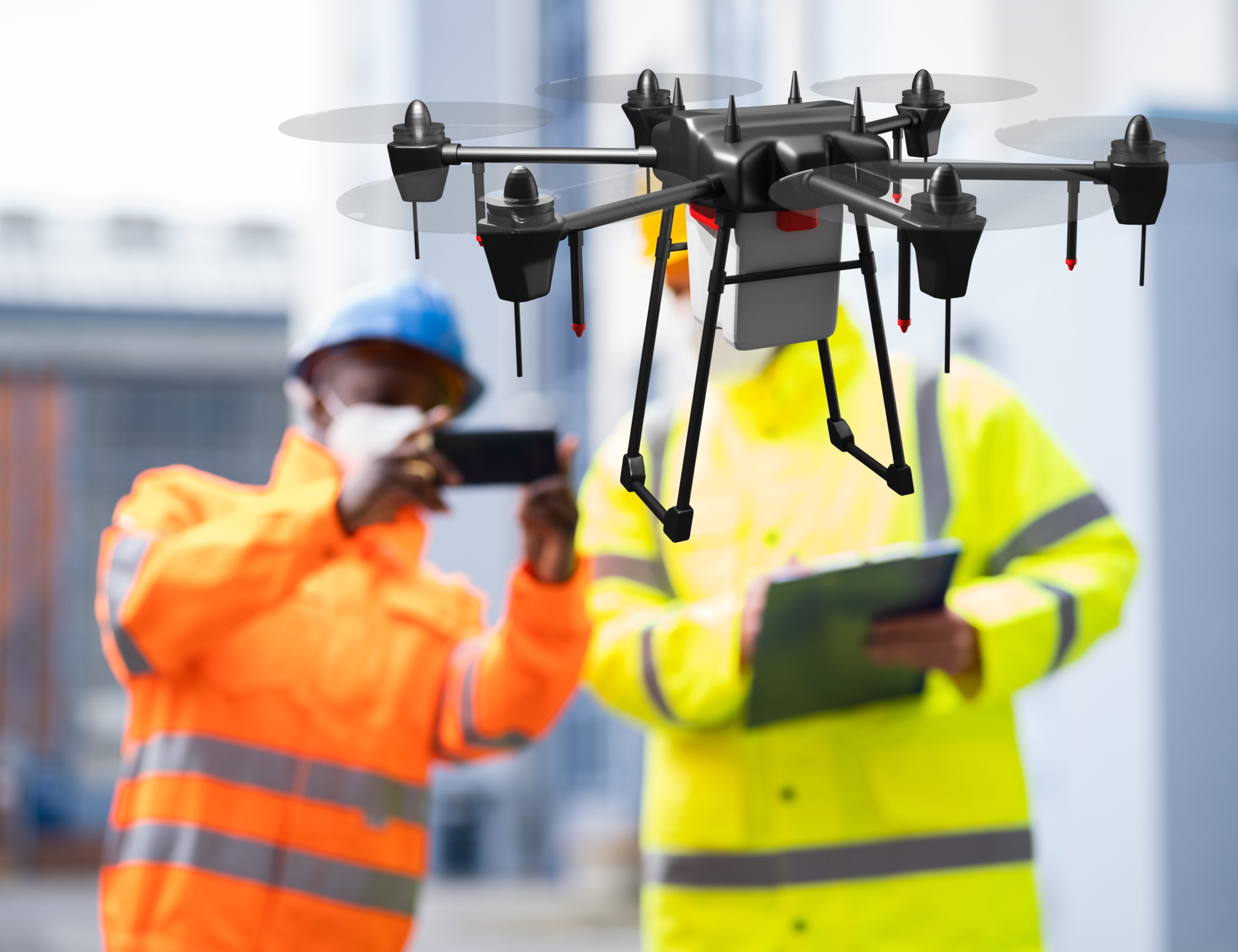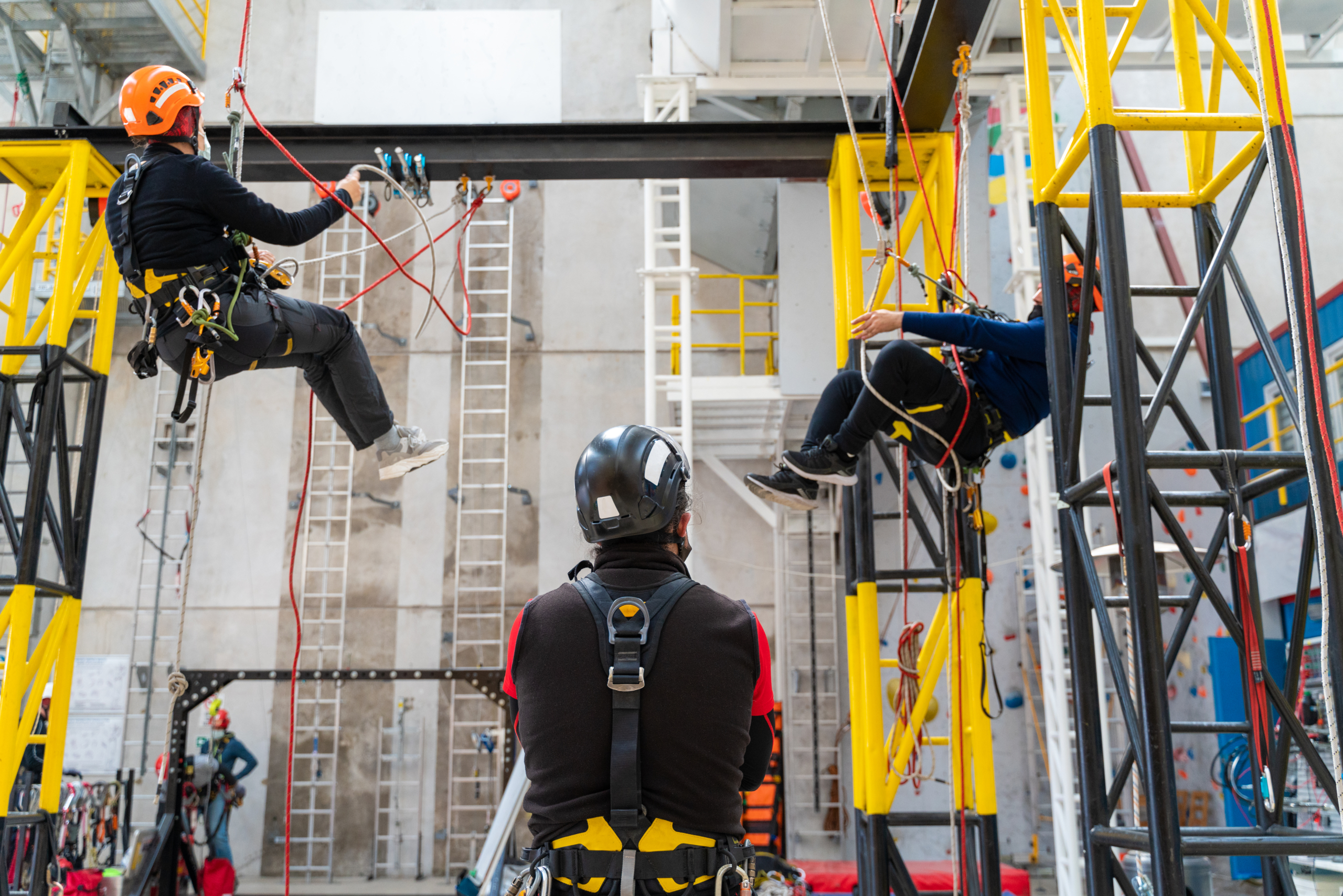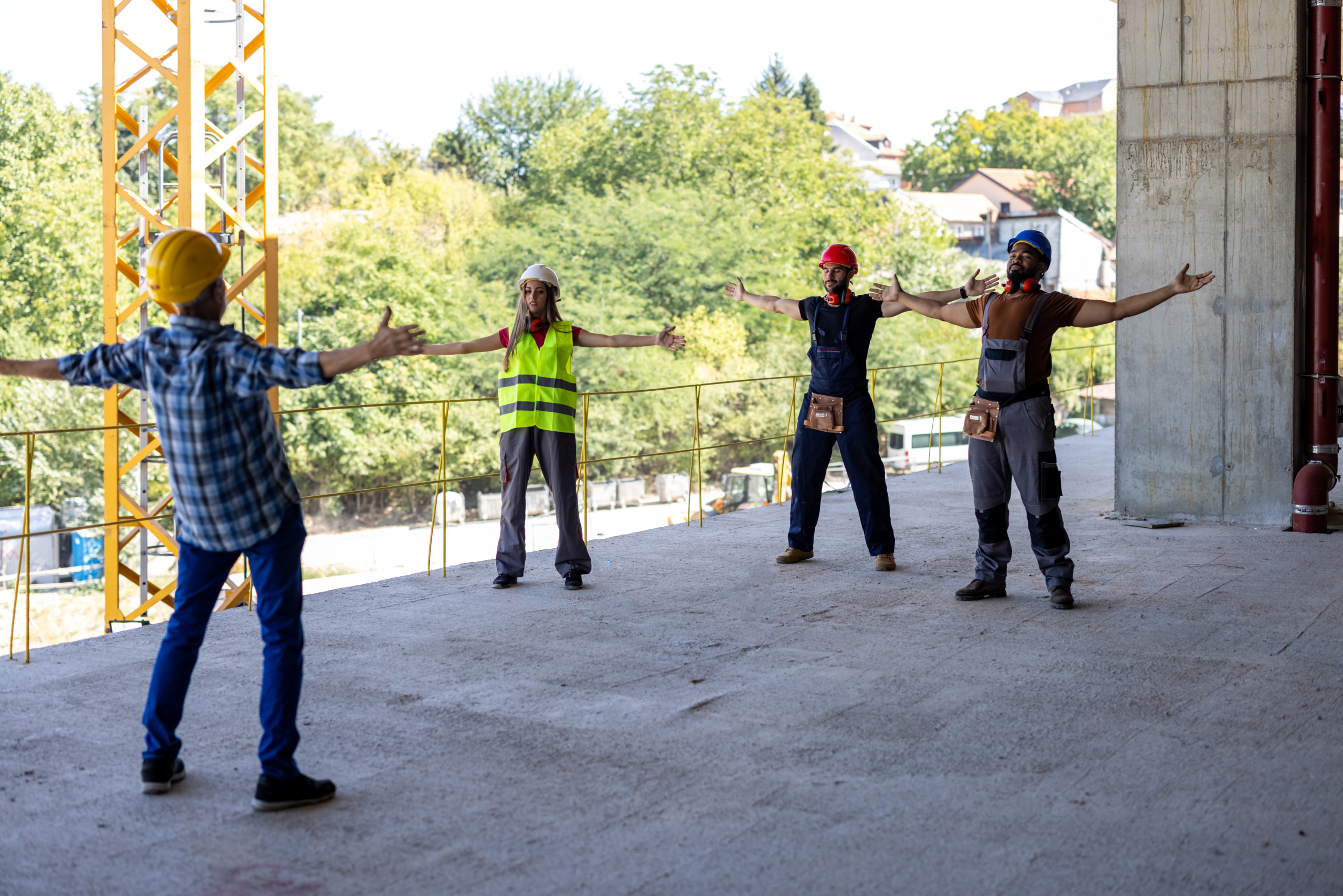The construction industry is changing with the times as new technology continues to be developed and introduced.
Everything changes, and the construction industry is not exempt. These changes have allowed the trade to become more efficient and competitive and have improved safety on job sites.
Construction is always a risky business. It is even riskier now because of the COVID-19 pandemic. This virus is causing companies to change the way they do things. Even though this is a challenge, construction continues on as usual. There are more employees than ever before working on construction projects even though the way to build these projects fluctuates.
Here are 17 trends that are expected to shape the industry in 2022:

1. Increased Use of Drones and 3D Technology
Drones are becoming increasingly useful in the construction industry. They provide a more efficient way to survey land and job sites. Drones can take pictures or videos of the job site, which can then be used to create physical 3D models.
This technology can also create virtual models of projects. Using the tech the right way can help with the planning and execution phases. It gives construction workers the option of checking for any issues with both the site and the land before getting started, which in turn saves time.
1. Increased Use of Drones and 3D Technology
Drones are becoming increasingly useful in the construction industry. They provide a more efficient way to survey land and job sites. Drones can take pictures or videos of the job site, which can then be used to create physical 3D models.
This technology can also create virtual models of projects. Using the tech the right way can help with the planning and execution phases. It gives construction workers the option of checking for any issues with both the site and the land before getting started, which in turn saves time.
2. Virtual and Augmented Reality for Training
Virtual reality (VR) and augmented reality (AR) training is becoming more common. This type of training provides a practical and immersive way to learn. An immersive experience is especially important for workers, as it can help them understand the job site and avoid hidden hazards.
Companies can use this type of training for a variety of purposes, such as safety procedures, equipment operation, and project management.

2. Virtual and Augmented Reality for Training
Virtual reality (VR) and augmented reality (AR) training is becoming more common. This type of training provides a practical and immersive way to learn. An immersive experience is especially important for workers, as it can help them understand the job site and avoid hidden hazards.
Companies can use this type of training for a variety of purposes, such as safety procedures, equipment operation, and project management.


3. Prefabrication and Modular Construction
“Prefab” and modular construction are also becoming more common. They offer a more efficient way to build.
Prefabrication is the process of making parts for a building in a factory before putting the parts together on site. This can help speed up the building process. It can also improve accuracy and quality control in all of the pieces that go into the end product.
Modular construction is similar to prefab, but the modules are built to be used as individual units. These units can then be merged to create a larger structure. Since they can build structures off site, it can help to reduce time to build and related costs.

3. Prefabrication and Modular Construction
“Prefab” and modular construction are also becoming more common. They offer a more efficient way to build.
Prefabrication is the process of making parts for a building in a factory before putting the parts together on site. This can help speed up the building process. It can also improve accuracy and quality control in all of the pieces that go into the end product.
Modular construction is similar to prefab, but the modules are built to be used as individual units. These units can then be merged to create a larger structure. Since they can build structures off site, it can help to reduce time to build and related costs.
4. Sustainable Building Practices
Sustainable materials are becoming more favored in the industry, as they offer a number of benefits, such as being environmentally friendly, strong, and energy efficient.
Examples of sustainable building practices include using recycled materials, using local materials, and investing in renewable energy.
The demand will also continue to rise as more buyers prioritize sustainability as a pillar for their projects. We expect this trend to grow as more firms look to reduce their carbon footprints.

4. Sustainable Building Practices
Sustainable materials are becoming more favored in the industry, as they offer a number of benefits, such as being environmentally friendly, strong, and energy efficient.
Examples of sustainable building practices include using recycled materials, using local materials, and investing in renewable energy.
The demand will also continue to rise as more buyers prioritize sustainability as a pillar for their projects. We expect this trend to grow as more firms look to reduce their carbon footprints.

5. Increased Use of BIM
Building information modeling (BIM) is a digital model that can be used to plan, design, and construct buildings. This collaborative technology is becoming increasingly popular in construction, as it provides a more efficient way to manage projects.
5. Increased Use of BIM
Building information modeling (BIM) is a digital model that can be used to plan, design, and construct buildings. This collaborative technology is becoming increasingly popular in construction, as it provides a more efficient way to manage projects.
6. Lean Construction Principles
Lean construction is a technique that focuses on cutting down on waste and doing the job with a more defined focus. This approach is becoming more attractive because it can help to reduce costs and improve project quality. It also helps you figure out what your client values in a project and looks at how to build a relationship with them.

6. Lean Construction Principles
Lean construction is a technique that focuses on cutting down on waste and doing the job with a more defined focus. This approach is becoming more attractive because it can help to reduce costs and improve project quality. It also helps you figure out what your client values in a project and looks at how to build a relationship with them.


7. Increased Focus on Safety
Safety is always a top priority. This is unlikely to change in the future. New tech and procedures are constantly being developed to help improve safety on job sites. As an example, fleet dash cams help ensure that everyone is being safe while on the job. If an accident does happen, workers can submit reports with mobile apps instead of carrying stacks of paper.

7. Increased Focus on Safety
Safety is always a top priority. This is unlikely to change in the future. New tech and procedures are constantly being developed to help improve safety on job sites. As an example, fleet dash cams help ensure that everyone is being safe while on the job. If an accident does happen, workers can submit reports with mobile apps instead of carrying stacks of paper.
8. Use of Alternative Project Delivery Methods
Other project delivery methods, like design-build and public-private partnerships, are becoming more popular in the construction trade. These methods can offer many benefits, like reduced costs and improved quality.
8. Use of Alternative Project Delivery Methods
Other project delivery methods, like design-build and public-private partnerships, are becoming more popular in the construction trade. These methods can offer many benefits, like reduced costs and improved quality.
9. Advanced Project Management Software
Project management software is becoming more user-friendly, with new features being added all the time. For example, GLXY Software Solutions makes it possible to reach subcontractors and vendors easily. The right software solution can help construction experts plan, manage, and complete projects, which is what GLXY aims to do.

9. Advanced Project Management Software
Project management software is becoming more user-friendly, with new features being added all the time. For example, GLXY Software Solutions makes it possible to reach subcontractors and vendors easily. The right software solution can help construction experts plan, manage, and complete projects, which is what GLXY aims to do.


10. The Rise of the Internet of Things
The Internet of Things (IoT) is a network of devices that are connected to the internet. These devices can include wearables, drones, and smart safety equipment. IoT is becoming increasingly popular in the industry, as it can help improve safety, increase efficiency, and reduce costs.

10. The Rise of the Internet of Things
The Internet of Things (IoT) is a network of devices that are connected to the internet. These devices can include wearables, drones, and smart safety equipment. IoT is becoming increasingly popular in the industry, as it can help improve safety, increase efficiency, and reduce costs.
11. Big Data Analytics in Construction
The construction industry is starting to use what’s called “big data and analytics” to improve the efficiency of project management. This technology can be used to track a variety of data points, such as job site conditions, weather patterns, and material costs.
Having this insight handy makes it easier to ensure that workers are on site when needed. It also helps to keep costs in check. Keeping costs down is especially crucial given the way inflation is affecting supplies.

11. Big Data Analytics in Construction
The construction industry is starting to use what’s called “big data and analytics” to improve the efficiency of project management. This technology can be used to track a variety of data points, such as job site conditions, weather patterns, and material costs.
Having this insight handy makes it easier to ensure that workers are on site when needed. It also helps to keep costs in check. Keeping costs down is especially crucial given the way inflation is affecting supplies.


12. Wearable Technology on Job Sites
Wearable tech, such as smartwatches and safety glasses, is being used more and more on job sites. For example, smartwatches provide messages in an instant and can also track where workers are. This technology can improve safety and communication by providing real-time information to workers.

12. Wearable Technology on Job Sites
Wearable tech, such as smartwatches and safety glasses, is being used more and more on job sites. For example, smartwatches provide messages in an instant and can also track where workers are. This technology can improve safety and communication by providing real-time information to workers.
13. 3D Printing in Construction
3D printing is being used in the construction industry for a variety of purposes, such as creating prototypes and manufacturing building components on demand.
This technology can help save time and money while still providing high-quality results. This technology has the potential to change the way buildings are designed and constructed.

13. 3D Printing in Construction
3D printing is being used in the construction industry for a variety of purposes, such as creating prototypes and manufacturing building components on demand.
This technology can help save time and money while still providing high-quality results. This technology has the potential to change the way buildings are designed and constructed.

14. Mobile Applications for Construction Workers
There are a number of mobile apps that are being produced for workers. GLXY Software Solutions offers such apps to help everyone keep track of the important things like time tracking, safety procedures, and overall project management.

15. Robot Assistants on Job Sites
Robots are starting to be used on job sites to perform tasks such as measuring, welding, and lifting. Some workers worry that this might reduce the number of jobs, but the reality is that robots can help to improve safety and efficiency while also freeing up workers for other tasks. In other words, robots aren’t taking away jobs from construction workers any time soon.

15. Robot Assistants on Job Sites
Robots are starting to be used on job sites to perform tasks such as measuring, welding, and lifting. Some workers worry that this might reduce the number of jobs, but the reality is that robots can help to improve safety and efficiency while also freeing up workers for other tasks. In other words, robots aren’t taking away jobs from construction workers any time soon.
16. The Growth of P3 Projects
Public-private partnerships (P3) include the cooperation of both the public and private sectors to finance, design, construct, and operate infrastructure projects. This type of project is becoming more attractive, as it can offer a number of advantages. These include improved project quality, reduced costs, reduced risk, and increased transparency.

16. The Growth of P3 Projects
Public-private partnerships (P3) include the cooperation of both the public and private sectors to finance, design, construct, and operate infrastructure projects. This type of project is becoming more attractive, as it can offer a number of advantages. These include improved project quality, reduced costs, reduced risk, and increased transparency.


17. Increasing Profit Margins by Reducing Waste
In the construction industry, one of the biggest challenges is reducing waste. This is important because efficient waste management can help to increase profit margins. Companies are working on a number of ways to reduce waste, such as using lean construction methods and recycling materials. The reduction in costs may also roll over to the consumer while still providing a wide profit margin for the construction company.

17. Increasing Profit Margins by Reducing Waste
In the construction industry, one of the biggest challenges is reducing waste. This is important because efficient waste management can help to increase profit margins. Companies are working on a number of ways to reduce waste, such as using lean construction methods and recycling materials. The reduction in costs may also roll over to the consumer while still providing a wide profit margin for the construction company.
A Few Last Words
The construction industry is always changing, and it can be hard to keep up with the latest trends. However, by staying up to date on the newest tech and expectations, you can ensure that your business is ahead of the curve.
From new technology to changes in the way projects are financed, there are a number of trends that are shaping the construction industry. Getting to know them ahead of time will ensure that you and your business are prepared for the future and will continue to thrive.
